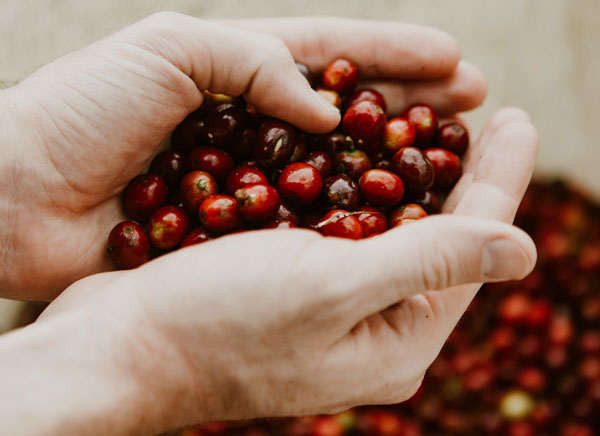[H]arvest is about to begin. There are those, like me, who cannot wait for it to start, and others who dread its arrival. Yet, it is a hopeful time of transition for everyone. The weather changes, the holidays have come and gone, school is out, tourism spikes, and everyone is that much busier.
Timing of harvest varies. This year’s picking will start a little later than usual; however, it is expected to end earlier than normal, since the crop is expected to come in all at once.
Production yields also vary. Annually, the average is 1,650,000 69-kilo bags per harvest. Last year’s production was lower than the previous one, and this year it is expected to be a little bit lower again.
Leading up to harvest an extraordinary amount of rain fell—something the producers are hoping ends up increasing the quality, if not the quantity, of their coffee. While it may be a good thing, it also brought challenges in October, when a strong tropical storm named Nate unleashed an amount of water the likes of which Costa Rica hadn’t seen for the last decade. Nate caused landslides, rivers to rise, and floods. As a result, many roads became impassable, structures were damaged, and there was loss of crop.
Normally harvest begins in mid-to-late November, when the southern growing region of Brunca, central region of Turrialba, and northern growing region of the West Valley begin making the first selective pickings of the harvest. The more recognized regions of Central Valley and Tarrazu catch up in January and the picking goes all the way until the end of March or beginning of April.

The Montero Family of Don Eli Micro-Beneficio
Up the mountains in Tarrazu, Carlos Montero does things typical of a farmer getting ready for harvest. He tours his micro-mill and shows us a nearby area where he is preparing a large campground for 40 students to stay at while they observe the coffee harvest over a week’s time. His farm becomes a very busy destination for visitors during the harvest, and so his family needs to do a lot of gearing up.
Carlos’s wife, Lucia, keeps the house neat, stocked, and prepares food for visitors during their stay. Meanwhile, Carlos shows us his nursery, where one-year-old coffee plants now reside, soon to be planted in fields and ready to produce and be harvested in another three years.
We tour another farm in the area where they have dry milling equipment for him to finish some of his leftover production from the year before into a final product ready to roast.
He stops in at the local coffee roaster and picks up coffee he and his son, Jacob, had toll roasted in order to sell in the local market.
The next day we get up very early to visit his farm on a prestigious mountain in the area called La Pastora. On the way up, we pick up one of his employees, Javier, who works with Carlos year round. There was fertilizer, rich in magnesium, sodium, and phosphate, in the back of his truck. When we arrived at his newest plantation, Carlos and Javier loaded up bags of fertilizer around their shoulders and began to spread it around each individual coffee tree.
We then walked through his crop to check on the plantation, how the pruning of his trees turned out, and saw that most of the cherries were still green and not mature enough to begin picking.
To see harvest in action, Carlos tells us to go to Chiripo Mountain and visit Ricardo Urena in the mountainous Brunca region.
 The Urena Family of Brunca
The Urena Family of Brunca
We head south on the Inter-American Highway towards San Isidro de General, up the mountain on a beautiful drive. The Urena family greets us outside their home and farming operation.
We hop in Ricardo’s truck and meet his brother Esteban further up the mountain where one of their micro-lots is being picked. A group of seasonal workers coming from Panama appears out of the coffee fields, returning after a brisk morning of hand picking on the extremely steep slopes of plantation. They congregate around a tarp and box the brothers have placed on the ground.
The box is called a cajuela, which measures 4.5 gallons by volume. It takes 20 cajuelas to make 1 fanega, which becomes about 100 pounds of green coffee. This is a standardized sized box by which farms must pay at least $2 per full box of coffee cherries by volume, according to Icafe, the “public non-governmental organization that enforces law #2762 for coffee production in Costa Rica.” Many farms pay $3 or more for perfectly selected cherries.

Once the picking and counting of cajuelas is done, the work for the seasonal employees is over. But it is just beginning for the brothers, who now must wet mill and dry the cherries.
The Fruits of Harvest
During harvest, a palpable sense of ripeness and opportunity fills the air. Costa Rica’s coffee crop helps support the economic growth and stability of the country. It generates income, accounting for 20 percent of its exports and employing about 10 percent of its citizens.

It’s not just a harvest of coffee, but also of hope.






 The Urena Family of Brunca
The Urena Family of Brunca










